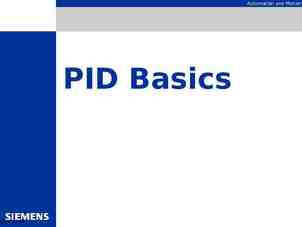Senior Care & Vaccines Companion Animal Initiative of Tennessee
43 Slides342.00 KB

Senior Care & Vaccines Companion Animal Initiative of Tennessee

Updates In Vaccine Technology And Senior Pet Issues Dr. Kristi Lively, DVM, DABVP Canine and Feline Specialty Village Veterinary Clinic & Laser Center Farragut, TN 37922 865-966-8900

Advances in Vaccine Technology Controversy has surrounded vaccine technology for the last 40 years Do vaccines protect pets for more than 1 year? Tradition doesn’t make it right USDA approved 3 year vaccine for Distemper, Adenovirus (Hepatitis) and Parvo virus is on the market- this changes everything

Vaccine History Annual vaccine protocols started in the 1950’s when the first canine distemper vaccines were developed By 1961 annual vaccinations were being questioned but the research didn’t exist to test the need Annual vaccination was born because it was cheap to do and the science didn’t exist to explain if this was right or wrong

History Continued In 1998 discussions began regarding the link of vaccinations to cancer in cats Feline vaccine guidelines and technology were revised Suddenly vaccinology and protocols were under scrutiny

History Continued 1998 a canine group published 3 year vaccine protocols Many veterinary schools started adopting these protocols In 2002 AVMA updates guidelines to allow for extended use protocols In 2003 AAHA published Canine Vaccine protocols vaccinating for Distemper, Parvo, and Adeno every 3 years

Into the Future Now we have scientific recommendations from our leading veterinary organizations, but we still did not have an approved product with a 3 year duration label Vets were using the 1 year products in an off label manner by giving them every 3 years We were betting that the older vaccines did what we hoped they did Has the immunity been proven? What’s my liability?

Challenge Studies Challenge studies are the ONLY way to truly prove the duration of effect of a vaccine Titers are more anecdotal Challenge study: vaccinate, wait 3 years challenge with the virus These are expensive studies to perform Many companies not willing to invest

Challenge Study In 2005 Intervet completed a 3 year challenge study for Distemper, Adenovirus and Parvovirus 20 Beagles in each group Each dog was exposed directly to the virus and monitored for clinical signs or shedding of the virus Excellent results This is the ONLY company to get USDA 3 year labeling

Challenge Studies Fort Dodge: They do NOT have a USDA 3 year label They used 7 dogs 1 in 7 was shedding Parvo in its stool 3 in 7 had clinical signs I consider this unacceptable- so we had to wait

Protocol Continuum Distemper/Adenovirus and Parvovirus combination Parainfluenza and Bordetella are annual in a nose drop Rabies according to county law (3 yr in Knox Cty) Corona no longer considered a core vaccine Lepto for at risk dogs only

Puppies 2 shot series of the Continuum DAP, with at least 1 booster being after 12 weeks of age DAP not due again for 3 years

Puppies Rabies at 16 weeks, at 1 year, and then every 3 years Bordetella/ Parainfluenza annually Others after risk assessment

What This Means To You Find a vet who is using the new Intervet product Ask your vet why they aren’t using this product Find a vet open to extended duration protocols, and tailoring the protocol to your pet’s individual needs Expense is actually less over 3 years

What This Means To Your Pet Safer- fewer side effects Less painful for the pet Its not “just about the shots” Redefining the reason for the annual visit Vaccines save lives, absolutely but they are not the most important part of the visit

Questions Regarding Vaccine Protocols

Considerations For The Senior Pet

Goals for Senior Patients Enhance the Human-Animal Bond Early detection of disease in the apparently healthy pet Individualized medical care Outline common senior conditions Prevent of delay morbidity/mortality Principles pain of assessing and managing

What is a Senior? Varies for breed and size In people, 54-60 years of age Dogs and cats: about 7 years of age Considered a senior when in the last 25% of the predicted life span for that breed

Approach To Apparently Healthy Senior Detect sub-clinical abnormalities and proactively intervene Thorough Nose history to tail physical exam

Approach Continued Client education Preventive Minimum Establish care data base a baseline assessment for future comparison (PE/Xrays/BW/UA)

Elements of a Thorough History Questions extend beyond the owner’s presenting concern Risk factor analysis Quality of life Specific behavior questions Medications and supplements Water intake Housebreaking Ambulation

Elements of the Physical Exam Observation before handling Weight changes Ocular exam Lymph nodes Thyroid enlargement Abdominal palpation Orthopedic and nervous systems Auscultation Rectal palpation

Minimum Laboratory Data Base AAHA recommends every 6 months: Complete blood count Urinalysis Fecal Chemistry HWT 27

Labwork Continued Urine protein/creatinine ratio Thyroid Schirmer tear test Blood pressure Intraocular pressures Imaging studies

Preventive Care Recommendations prior to or at the onset of disease to prevent/slow the effects of disease Start senior wellness plans at middleage to establish baselines AAHA recommends bloodwork annually during middle-age

Client Education Semi-annual exams Increased attention to oral health, prophylaxis and home care Nutrition and supplementsdigestibility, calories, new developments Weight and parasite control Maintaining mobility- exercise or therapy

Client Education Vaccination as appropriate Mental health/enrichment- cognitive decline, social interaction Environmental conditionsaccommodation of disabilities, indoors/outdoors Potential reproductive disease in unneutered pets: pyometra/testicular, mammary and prostatic neoplasia

Approach To The Unhealthy Senior Pet Common clinical conditions Evaluation of the patient Client communication Choosing appropriate treatments Monitoring Pain management Nutrition

Common Clinical Conditions Weight changes Orthopedic conditions- arthritis GI disease- IBD, dental disease, liver Endocrine disorders- Cushing’s, Hypothyroidism, Diabetes Mellitus

Common Clinical Conditions Neurologic /behavior: Disorientation House soiling Anxiety Aimless activity, sleep-wake cycle alteration Fecal or urinary incontinence Spinal disease/ seizures

Common Clinical Conditions Sensory: KCS, cataracts, retinal disease, deafness Urogenital: renal disease, UTI’s, stones, uterine or prostatic disease Cardiac: murmurs, endocarditis, dilation Anemia Skin: tumors, otitis Respiratory: laryngeal/ tracheal collapse/ saccules

Exam Of The Sick Senior Pet Still nose to tail, but pay particular attention to clinical changes or signs of pain Maybe required more often than every 6 months depending upon condition Include blood work, blood pressures as appropriate for the condition or medications

Client Communication Veterinarian should recommend what is best for the pet and the client choose what is best for both of them Discuss your follow-up plan and required monitoring Get diagnosis and information in writing Copies of blood work

Client Communication Discuss prognosis Discuss side-effects of treatments Discuss time commitment Discuss quality of life issues Pain management

Choosing Appropriate Treatments Don’t overuse/indiscriminate use of antibiotics Avoid drugs that alter mentation or impair mobility (sedatives) NSAIDs (Rimadyl, Deramaxx, Previcox) Must monitor blood work, other meds

Long Term Monitoring Vet and client share the responsibility of complying with long term monitoring Drug monitoring (therapeutic levels) Specific tests according to disease state Formal hospital call back system is crucial to successful case management Consider referral to specialist as needed

Pain Management Treatment options vary depending upon the type of pain (acute vs chronic) Opiods are not as appropriate for chronic pain alone Supplements (Cosequin, Adequan, Fatty acids) Physical therapy and massage

Pain Management Cont Acupuncture Weight management Environmental modification Frequent communication between vet and owner Discuss side effects, monitoring, combinations

Nutrition The unhealthy senior pet will have unique nutritional needs Prescription diets Weight control Caloric intake (decreased or increased)

Conclusion The goal is to identify underlying disease before it is clinical Start treatment and monitoring plans proactively, not reactively Ensure the best quality of life for the senior patient and for the senior pet owner Communication and follow-up are key

Questions Regarding Senior Care?

For more information, please contact CAIT www.vet.utk.edu/cait [email protected] 865-755-2276






